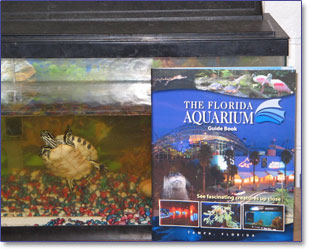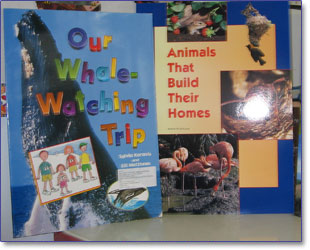  (Page 1 of 2) (Page 1 of 2)
Understanding Stories:
What Does This Mean? Why Is It Important?
Through conversations
with others in the same space at the same time,
children are able to figure out the meanings
of unfamiliar words and phrases, and what is
being said. They watch facial expressions,
notice changes of expression, and look at the
objects around them to help them understand.
However, listening to
stories and reading
require children to rely on the words themselves
in order to figure out the meaning of what
they are hearing. Reading to children helps
them build the thinking skills, vocabulary,
and background knowledge they will need to
comprehend more challenging texts as they
move through school.
When we read different types of texts (such
as grocery lists, menus, and storybooks) to children,
they learn how to respond and what to expect.
They learn that stories and informational texts
are organized in different ways. By reading lots
of different kinds of books to children, we help
them learn how different texts are organized.
Helping Children Grow
in Their Understanding of Stories
By paying attention to the comments children
make, the questions they ask and answer, and how
they retell stories, you will figure out what
students understand about the books you read to
them and how you can help them grow in this understanding.
If children have had few experiences of hearing
books being read aloud, their early retellings
and comments will include a few key words and
phrases from the story and some pointing to
details in pictures. As children gain more experience
in listening to you and other children retell
stories, when they are retelling stories, they
should begin to include main characters and
a sequence of the story's events. The kinds
of question you ask as children retell stories
will teach them to include these details.
Over time, you will want to help children listen
for story elements, such as the characters’
problems, and start to think about how settings
influence problems and solutions. Help children
link the events in a story and include more “story-like”
terms such as “Once upon a time,”
or “suddenly there was...” as they
retell stories. Again, when you retell stories
for children and ask key questions you help children
learn to expand their retellings.
Ideally, as children prepare to enter kindergarten,
you want them to be asking questions, making inferences,
paying attention to details, and sharing reasonable
predictions about what will happen next in a story.
You want them to make connections between their
own lives and the books you read to them and to
make connections to other books you have read
to them.
Reading Informational
Books (Nonfiction)
 Don’t forget to read
lots of informational books to your students,
too. Often, early childhood teachers hesitate
to read informational books to their students.
However, there are many wonderful informational
books for young children offering rich resources
for building their background knowledge and vocabulary
for school. Young children who have repeated experiences
with informational texts are at a distinct advantage
for learning words and concepts related to science
and social studies. This will help them succeed
in school. Reading informational books is a powerful
way to encourage conversation, question asking,
and thinking in your preschool classroom. Don’t forget to read
lots of informational books to your students,
too. Often, early childhood teachers hesitate
to read informational books to their students.
However, there are many wonderful informational
books for young children offering rich resources
for building their background knowledge and vocabulary
for school. Young children who have repeated experiences
with informational texts are at a distinct advantage
for learning words and concepts related to science
and social studies. This will help them succeed
in school. Reading informational books is a powerful
way to encourage conversation, question asking,
and thinking in your preschool classroom.
You will not necessarily
read an informational book aloud from
start to finish. Often, you will only read and
talk about a small portion of the book. A great
way to encourage children to ask questions and
talk about new information is to show the pictures
or illustrations in the book and ask children, “Do
you have something to say about this?” While
this is a great way to introduce a new book,
it is also a powerful way to revisit a book
you have read to students before. Finally, when
reading informational books, you will want to
stop regularly to clarify the meanings of technical
terms, to summarize the information or make
links for children between their own experiences
(or previous books) and what was just read.
Informational books for preschool children should
have many photographs or other visual aids
and some text with a few technical words.
 Exposure to informational books will help children
learn that these books are written to help them
learn about the world around them. Help children
to start using more technical vocabulary and use
of timeless, present-tense verbs in their conversations
and recounting of informational texts. Help children
notice how informational books are divided into
sections, and how photographs and other supporting
graphics will help them understand the information
presented in the book. Exposure to informational books will help children
learn that these books are written to help them
learn about the world around them. Help children
to start using more technical vocabulary and use
of timeless, present-tense verbs in their conversations
and recounting of informational texts. Help children
notice how informational books are divided into
sections, and how photographs and other supporting
graphics will help them understand the information
presented in the book.
|